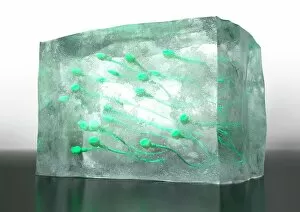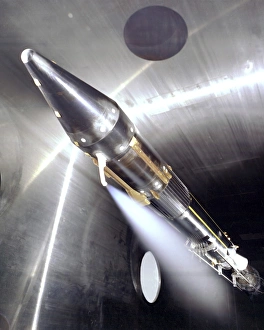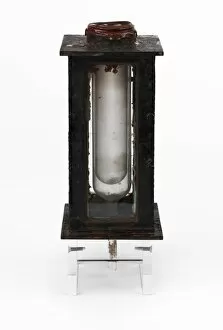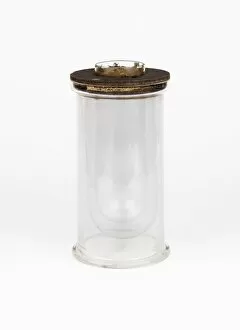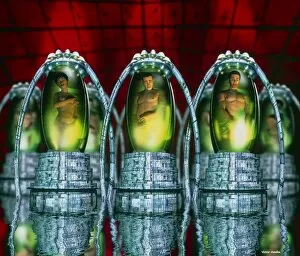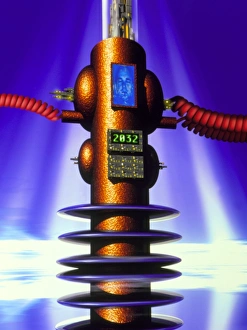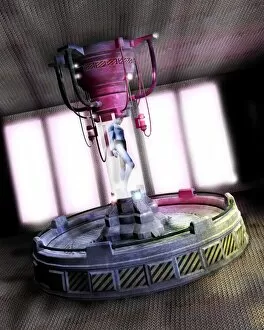Cryogenics Collection
"Cryogenics: Unlocking the Frozen Potential of the Future" In a conceptual image that portrays both solitude and anguish, cryogenics takes center stage
All Professionally Made to Order for Quick Shipping
"Cryogenics: Unlocking the Frozen Potential of the Future" In a conceptual image that portrays both solitude and anguish, cryogenics takes center stage. Augmented reality (AR) merges with frozen sperm in this captivating color image, creating a computer graphic that represents the cold and distant world of cryogenic preservation. Amidst an arid climate, where adversity bends but does not break, a block of ice symbolizes the clouded possibilities that lie within this bizarre realm. With AR technology enhancing our understanding, we delve into a world where freezing temperatures and cutting-edge science collide. On December 19th, 2018, NASA Launch Director Charlie Blackwell-Thompson's words echoed during a groundbreaking ceremony for new advancements in cryogenics. James Fesmire Ph. D. , NASA lead engineer for the Cryogenics Testbed, held training sessions to explore uncharted territories on November 6th. Workers gathered at the Cryogenics Laboratory to attend insulation training sessions on November 6th as well. The dedication displayed by these individuals showcases their commitment to pushing boundaries and unlocking new frontiers in this field. During another groundbreaking ceremony on December 19th, NASA and contractor managers united to celebrate progress made in developing liquid hydrogen tanks. Bill Hill, Deputy Associate Administrator for Exploration Systems Development at NASA Headquarters emphasized how these advancements will shape our future endeavors. Jennifer Kunz, Deputy Program Manager for Exploration Ground Systems also played an integral role in propelling cryogenic research forward. Her expertise ensures that every step taken is meticulously planned and executed flawlessly. Kennedy Space Center Director Bob Cabana's inspiring words resonated during yet another groundbreaking ceremony on December 19th. His vision encapsulates how these developments will propel us towards reaching new heights while preserving our past achievements. As we venture further into the unknown realms through augmented reality and cutting-edge technology like never before imagined; it becomes clear that we are on the cusp of unlocking the frozen potential of our future.

